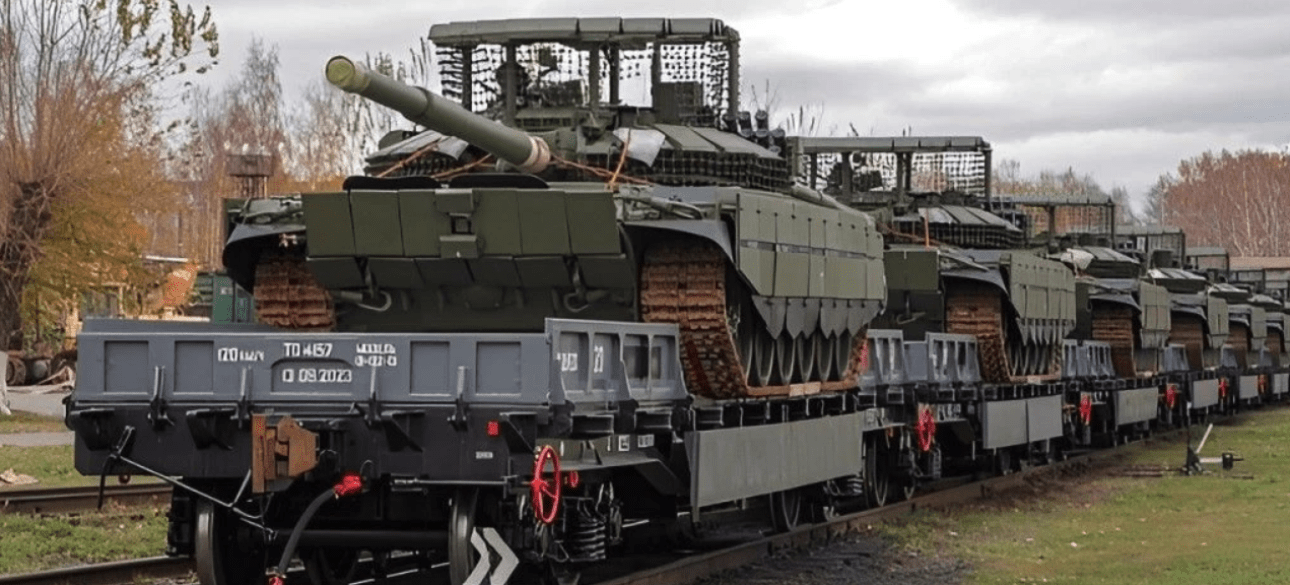
 By Victor Duda
By Victor Duda
The threat of these all -air devices, many of which carry grenades or equipped with explosives, forces the tankers to hide and sherry to have at least some chance to survive. "Hostile and friendly drones intersect airspace, hunting for such valuable purposes as heavy armored vehicles and artillery," David Kirichenko writes for the Center for Analysis of European Policy in Washington (Sera). -"This air game in the cat-mouse has radically changed tank tactics.
" According to Cepa, a new "era of cautious tanks" has come. In the first decades of the Development of the Armored War, there was a time when tanks could move in the battlefield in broad daylight - and their crews could count on survival. Yes, cross -country, mines, artillery, manual anti -tank means and other tanks posed a threat. But not existential.
It is this confidence that the tanks will be able to survive-especially with the support of engineers, infantry, artillery and aviation-formed the basis of the doctrine, which the largest armies defended throughout the Cold War and until the 2020s. According to her, tanks led powerful attacks on enemy lines, seeking to break through external defense to get into the vulnerable rear of the enemy.
The essence of the tank war was an aggressive attack, not in caution, and many supporters of the armored war war argue that it should be. Massive tank attacks were commonplace during the US invasion of Iraq in 2003. But for 20 years, drone technology has developed faster than remedies from them. When, in February 2022, the Russian army launched powerful tank offenses deep into Ukraine, it collided with the Revolution of drones in the armored war.
Russian columns that were stretched along the routes leading to Kiev were under the constant supervision of Ukrainian drones. Ukrainian artillery and anti -tank missile groups waited to ambush on Russian cars where they were the most vulnerable: at the end of the fragile lines of supply of Russians. The first explosive FPV-non-Spots appeared in the sky over Ukraine when the Russians retreated in 2022.
By 2023, tiny lavish drones-some of them were equipped only for observation, others-for the explosion in the event of contact-were everywhere. Today, Ukraine produces a two-foul FPV non-$ 500 at a speed of three million a year. Russia, at least, corresponds to this indicator, although its drone operators may be less qualified. Most tanks were developed in the era when the most common were attacks from flanks and front.
In order to protect the tanks from the most likely attacks, the engineers wound the upper and rear armor of the tank and reinforced on the tower and on the frontal arch of the corps. But FPV drones can strike at the angles that use this thinner protection from above and behind the tank. A huge number of FPV drones at a certain length of the front line - sometimes tens at a time in one place - exacerbates the problem.
"In 2024, the FPV-non-500 dollars can destroy a millions of a tank," says Tankist Bogdan. According to the analysts of the reconnaissance company Oryx, in 31 months of fierce battles, the Russians lost about 3,300 tanks. These are as much as the Russian soldiers were in service before the invasion. (The Kremlin compensated for the losses by building new tanks and restoring the old days of the Cold War). Ukrainians lost about 900 tanks. It is also almost 100 percent of their pre -war reserves.
To evaluate the scale of tank losses, think that the British army has just over 200 tanks. The Russian army loses so many months. Russian and Ukrainian tankers are trying to adapt. To survive, tanks hide - and fire from their guns under the cover of disguised stationary positions.
When the tanks have to go out to the open space for attacks, their crews are calculated on radio interruptions and layers of additional armor - explosive reactive blocks, metal grates and casing - to reduce the risk of drones. "Tanks are no longer as effective as before," said Kirichenko tanker named Victor, "but that does not mean that they are already in vain. " "The tanks will also work in the future, but FPV non-tribes have changed the tank war forever," he added.










All rights reserved IN-Ukraine.info - 2022